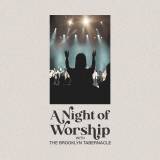Know Your Voice Type (PART 3)

Countertenor
If you think that you might be a countertenor, read my post about falsetto and countertenors in order to find out if you really are a countertenor or, instead, a falsettist.

Though extremely unique, countertenor is not an operatic voice type, as historically, it was the castrati (male singers castrated before puberty) who would be chosen for the female operatic roles – it was not proper for women to sing in the opera. Instead, countertenors were popular in religious choirs, where women were also not allowed to participate.
The castratti are out of the scope of this post, but for those who are interested to learn more about them, I would like to recommend the movie Farinelli, a literary twist on the life of Farinelli, the most famous castrato of all times.
Tenor

In the opera, the primo uomo is most often a tenor, and you will know he is a tenor because of the ringing quality in his voice. A true tenor has a high tessitura, above the middle C4, and uses a blend of head resonance and falsetto, as opposed to falsetto alone.
Many a baritone will try to use this technique to classify as tenor and some will be successful; you’ll know who they are because of their red faces when trying to sing the high notes in the tenor melodic line.

Baritone

In a choir, a baritone will never learn about the particulars of his voice, since he will have to sing either with the tenors or the basses. Most baritones with a high tessitura choose to sing with the tenors, and respectively, the ones with a lower tessitura sing with the basses. Their range is anywhere between a G2 and a G4 but can extend in either way.
If you sing tenor and can’t reach the higher notes with ease, or sing bass and can’t reach the lower notes naturally, you’re most probably a baritone and you shouldn’t worry about it. Let your fellow singers help out.
ALSO SEE: How to Develop Voice Vibrato
Bass

Just with every extreme, it’s really hard to find true basses and it’s almost impossible in the younger ages where the male bodies are still developing.
Though in a choir basses might have rather monotone melodic lines, in the opera they have a great range of roles to choose from. Basses are used as the villains and other dark characters, the funny buffos and in comic-relief roles, the dramatic princes, the noble fathers of heroines, elderly priests and more.
Now that you have learnt all about the major categories in voice types, I’m sure you’ll want to know how to distinguish between the secondary categories. Do you know the difference between a lyric soprano and a dramatic soprano or a leggero tenor and a spinto tenor? How can you tell which one you are?
KNOW YOUR VOICE TYPE (PART 1)
KNOW YOUR VOICE TYPE (PART 2)
Know Your Voice Type (PART 3)
 Reviewed by Admin
on
3:30:00 PM
Rating:
Reviewed by Admin
on
3:30:00 PM
Rating:
 Reviewed by Admin
on
3:30:00 PM
Rating:
Reviewed by Admin
on
3:30:00 PM
Rating:
















Post a Comment